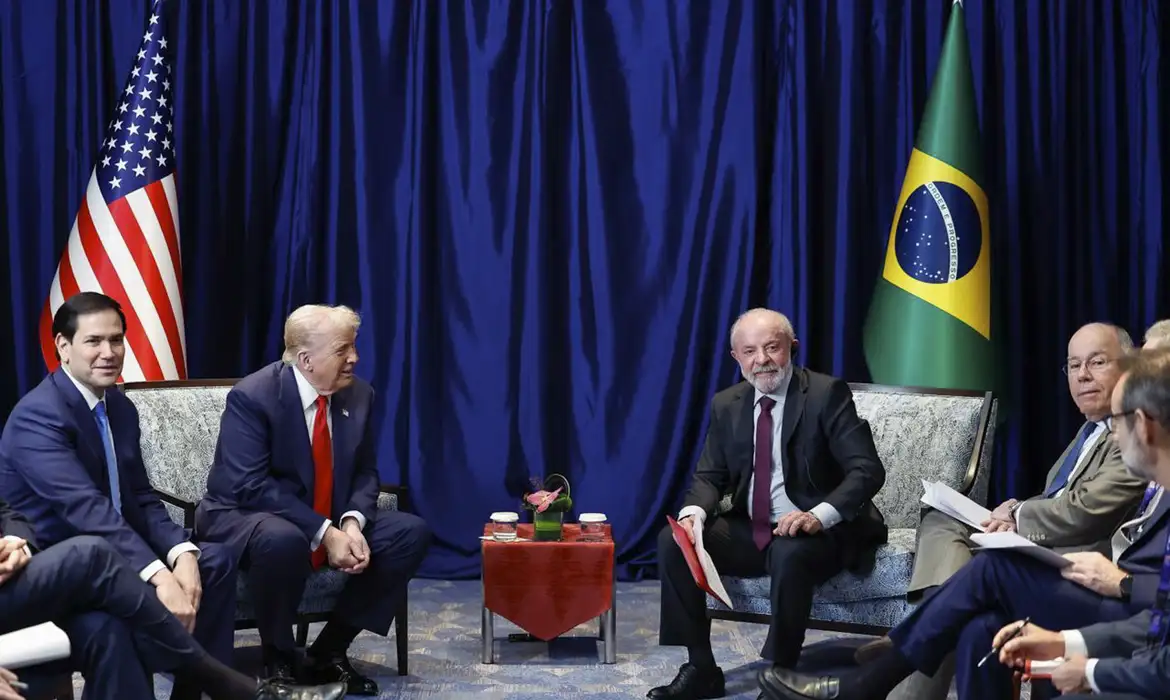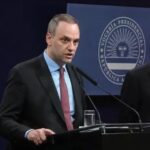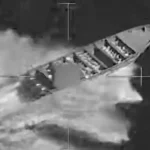
The diplomatic relationship between Brazil and the United States entered a new stage after the meeting between President Luiz Inácio Lula da Silva and North American President Donald Trump, held in Kuala Lumpur, Malaysia.
According to the Minister of Foreign Affairs, Mauro Vieira, an exchange of official visits between the two heads of state is being planned, signaling political and commercial rapprochement after months of bilateral tensions.
“There will be reciprocal visits. Trump wants to go to Brazil and Lula said he will go to the United States with pleasure”, said Vieira after the meeting, according to a statement to CNN Brasil. The chancellor characterized the meeting as the first step towards a new cycle of negotiations, especially focused on the economic agenda.
The meeting, which lasted around fifty minutes, took place at the Kuala Lumpur Convention Center and was attended by ministers and diplomatic advisors from both governments. In addition to conversations between the presidents, members of the economic teams began discussions on trade, tariffs and strategic cooperation instruments.
Tariffs and sanctions on the central agenda
The main demand presented by the Brazilian delegation was the review of tariffs imposed by the United States on national products. Brasília seeks to reverse surcharges that affect sectors such as coffee, meat and steel, adopted during the process of diplomatic tension that occurred in recent months.
In addition to the tariffs, the Brazilian government is calling for the removal of sanctions established by the so-called Magnitsky Law, which affected Brazilian authorities, including ministers of the Federal Supreme Court (STF). The suspension of these measures will be the subject of technical negotiations scheduled to take place in Washington and Brasília.
According to Mauro Vieira, teams from both countries will define a meeting schedule to address these points. “It was the first step towards negotiation. Now the technical work phase begins, which will define practical directions”, he stated.
Dialogue described as direct
According to the executive secretary of the Ministry of Development, Industry, Commerce and Services, Márcio Elias Rosa, the meeting allowed for a dialogue considered productive. “It couldn’t have been better”, said Rosa, highlighting that the two delegations discussed topics directly.
The conversation between Lula and Trump also included references to each other’s political trajectories. According to Vieira, there was mutual praise. Trump would have highlighted the importance of Lula’s role in international politics, while the Brazilian president mentioned the relevance of reestablishing permanent diplomatic channels between the two countries.
Context of the rapprochement
This was the first scheduled face-to-face meeting between Lula and Trump since both returned to command of their respective governments. The meeting takes place after a phase of tension that involved the imposition of tariffs, sanctions on Brazilian authorities and public debates about trials held in Brazil.
Despite the differences recorded in previous months, the meeting in Kuala Lumpur suggests a gradual reconstruction of the bilateral relationship. The conversations took place at a time when the United States is seeking to rebuild strategic supply chains and expand access to minerals considered essential for industrial sectors, a topic of direct interest to Brazil.
Next steps on the diplomatic agenda
From the meeting onwards, formal negotiations should begin on two main fronts:
Trade and tariffs — analysis of mechanisms for reducing barriers and review of punitive measures adopted in recent months.
Strategic cooperation — discussion on production chains linked to the energy transition, biofuels and critical minerals.
Furthermore, official visits must be included in the diplomatic calendar of both governments, although dates have not yet been defined.
According to Vieira, the guidance is that the two chancelleries maintain permanent communication channels to monitor the progress of the agreements.
Institutional normalization signal
The meeting between Lula and Trump is interpreted within Brazilian foreign policy as a movement to reestablish predictability in relations with Washington, without renouncing the international insertion strategy that includes dialogue with Europe, China, countries in the Global South and multilateral coalitions such as BRICS and G20.
Negotiations on tariffs and economic cooperation will indicate whether the approach will be punctual or structured. Until the next steps are detailed, the diplomatic gesture represents a political signal: Brazil and the United States seek to restore a channel of cooperation after a period of instability.
Source: https://www.ocafezinho.com/2025/10/26/lula-e-trump-preparam-visitas-oficiais-reciprocas-apos-encontro-na-malasia-e-abrem-nova-fase-na-relacao-brasil-eua/

